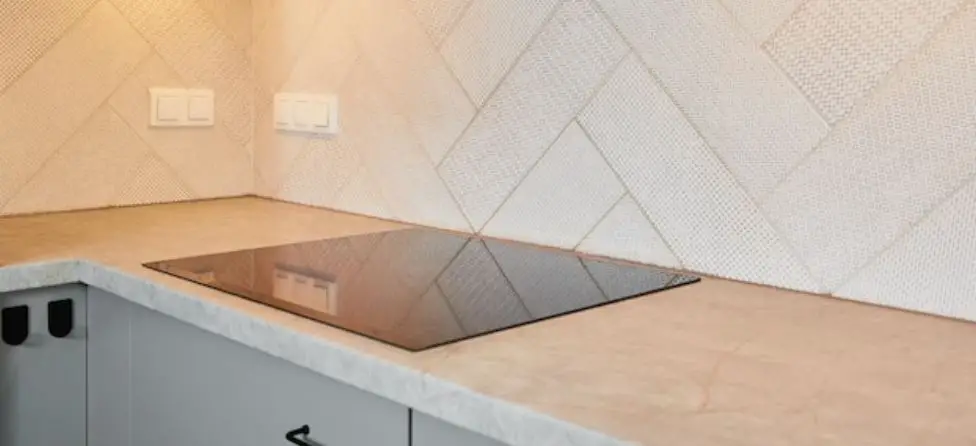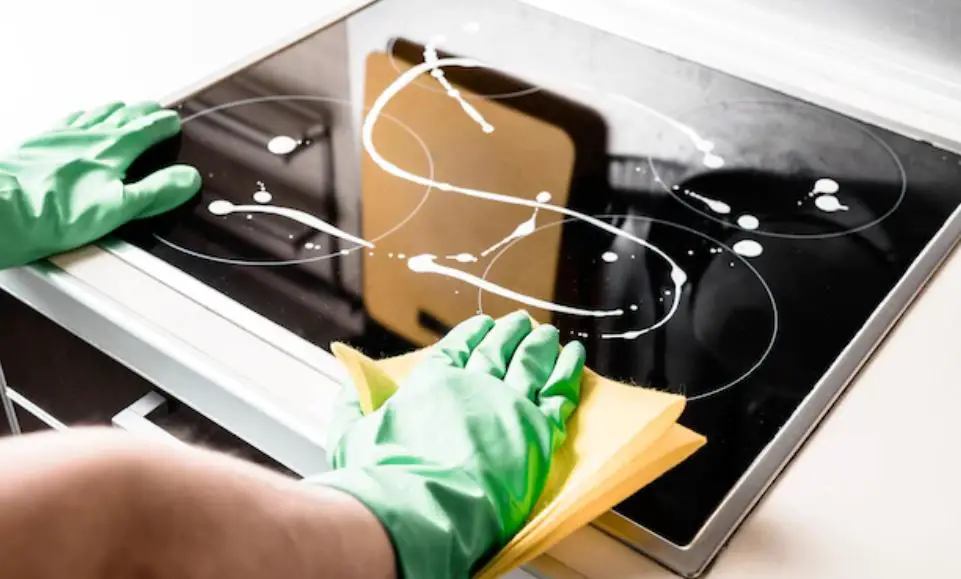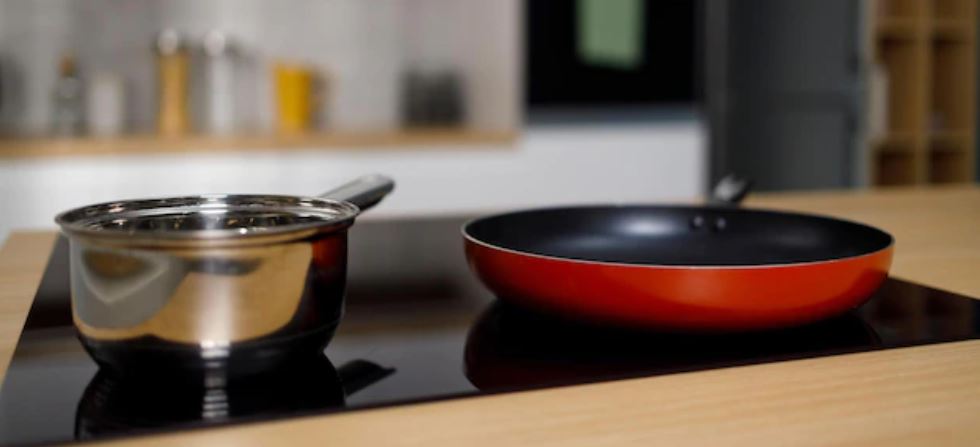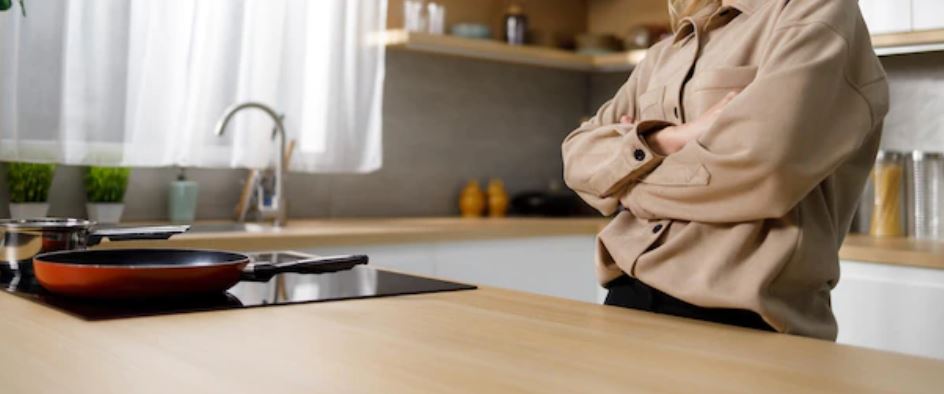Problems And Disadvantages Of Induction Cooktops – Are They Worth It?

Induction cooking has had its fair share of pros and cons in our experience.
A lot of people see it as the wave of the future and some people even view it as “chic” because it has long been the standard in European kitchens.
But not everyone state-side understands induction cooktops – much less induction cooking. It’s very important to know the pros, cons, advantages and shortcomings before you invest in an induction cooktop.
So before you start getting wild with kitchen remodeling ideas, it would be a great idea to read the following article. Today we will be tackling the question, ‘are induction cooktops worth it?’
An Overview of Why you May Want to Avoid Induction Cooktops
“The first thing that may deter some people from induction cooktops is that they are more expensive than gas ranges. The upfront cost is higher than most types of cooktops and on top of that, only certain types of cookware can be used on induction cooktops.”
What Exactly Are Induction Cooktops?

For the uninitiated, induction cooktops are a kind of electric stove.
The stovetop is made up of flat glass and directly underneath the glass are heaters. When you turn the heaters on, no heat is generated.
But the heating coils underneath the glass are powered electromagnetically and will only generate heat when they make contact with induction cookware. When the cookware (typically made of iron) makes contact with the heaters, the iron particles react and generate heat.
So in reality, it’s not the burners that are generating the heat: it’s the cookware itself. Heat is only generated when the cookware makes contact with the electromagnetic burners and all the heat that is generated is localized in the cookware itself.
And since you don’t have to wait for any electric coils to heat up, induction cooking tends to be a bit quicker than electric stoves. They sound really cool and they certainly can be; but there are some key disadvantages to induction cooktops…
Common Disadvantages of Induction Cooktops
Just like with any type of cooking range, induction cooktops have their fair share of flaws and shortcomings. In our experience, these are the most glaring of those flaws:
They Have a Higher Upfront Cost
– Compared to gas and electric stoves, induction cooktops are more expensive. In fact, the high-end models can cost up to $5000.
You Need Specific Cookware
– The cookware you have may not be compatible with your new induction stove which would mean you also have to buy all-new cookware. Aluminum and anodized aluminum usually won’t work on induction cooktops as they lack the metals needed to spur the electromagnetic heat transfer.
They Can Be Noisy
– Induction cooktops can emit different noises such as a hum when they are on a high setting or a clicking on the low settings. Some models also have fans dedicated to cooling down the electronic components that can make noise during operation.
The Feel is Different
– If you are the type of home cook that likes cooking over an open flame or at least seeing the signs of a heated up burner, induction cooktops may not be right for you. They obviously produce no flame; but the burners don’t glow like electric coils either.
It’s Easy to Leave Them On
– Because there is no visual cue that induction cookers are on, it’s very easy to forget to turn them off.
The Price of Switching
– If you already have an electric stove and you simply want to switch to induction, the price won’t be very high. But switching from gas to induction can be very expensive because the utility hookups are very different and will cost more to convert.
The Learning Curve
– Many new owners of induction cooktops burn their first few meals because they aren’t used to how quickly they heat up. It may take some time for you to truly get the hang of cooking on an induction range.
Delicate Cooktop
– Because induction ranges have a glass upper layer, they can incur damage very easily. Scratches are very common and it is also pretty easy to crack the glass with heavy cookware.
Digital Interference
– If you use a digital meat thermometer, you will probably have to buy an analog one to use with an induction cooktop. That’s because the magnetic field generated by induction cooktops often interfere with digital thermometer readouts.
Possible Health Risks
– Although there have been no direct links between the electromagnetic fields produced by induction cooktops and health risks, exposure to electromagnetic fields is always a bit of a concern.
Common Advantages of Induction Cooktops
There are two sides to every coin and induction cooktops are no different. Here is what we like about these kinds of ranges:
Efficient Heating
– If you are pressed for time you will probably like induction cooktops because they get your cookware up to temperature very quickly.
Cool to the Touch
– And if you have kids or pets, induction cooktops are safe because the “burners” stay cool to the touch.
Eco-Friendly
– With many states actually banning natural gas-burning stoves in new home construction, induction cooktops are viewed as the environmentally sound alternative.
Other Things to Consider

There are also some maintenance concerns you should consider.
For instance, troubleshooting issues with your induction cooktop can be very difficult as the technology is relatively new and experts on these kinds of appliances are few and far between.
That also means that repairs can get quite costly. Induction cooktops have also been known to stop heating effectively after just a few years. Also, you have to be very careful about where you place your cookware on the burners.
Since there are no glow or light cues as to where the heat is being generated, it can be difficult to position your pots and pans correctly.
Induction Vs Electric
In general, electric cooktops don’t heat up as quickly as induction cooktops.
The electric coils will also stay hot for a while after you are done cooking so there is always a burn risk. Induction cooktops also consume more energy: 320 (electric) watts vs 225 (induction) to boil a pot of water.
Induction Vs Gas
While you don’t need any special cookware with a gas cooktop, obviously you are dealing with an open flame so there is always a burn risk.
However, gas ranges are more affordable upfront than induction cooktops.
Also, it is estimated that induction ranges cost between $10-$15 more per year to run than a gas cooktop.
Induction Vs Radiant
Radiant cooktops rely on energy being transferred from the burner, through the ceramic cooktop and onto the cookware.
The process can take much longer than induction heating.
However, induction cooktops tend to be more expensive than radiant cooktops upfront. Radiant cooktops tend to be less efficient because the burner stays hot after you turn it off.
Induction Vs Infrared
Infrared cooktops use a combination of halogen lamps and coils to transfer heat to the cookware.
As such, they don’t heat up as quickly as induction cooktops but they tend to distribute heat more evenly.
Plus, you have many more options with cookware with an infrared cooktop. However, radiant cooktops are not as energy-efficient as induction cooktops.
Induction Cooktop FAQ’s

Why does my induction cooktop keep shutting off? – Your induction cooktop may be turning off suddenly as a precaution from overheating. If you are using multiple burners at once and using them on high settings, the cooktop may turn itself off to prevent overheating.
How do you reset an induction cooker? – Your model should have a reset button. However, if the button isn’t working, you can perform a hard reset by shutting off power to the cooktop via your circuit breaker.
Do induction cooktops glow red? – Newer models do have visual cues to let you know that they are on. However, most induction cooktops don’t glow at all.
What happens if you leave an induction cooktop on? – Not much. There is no heat generated by an induction cooktop unless there is cookware on the burners. If you leave them on they won’t heat up or cause a fire. However, you will be wasting electricity.
Is cast iron OK for induction? – Yes, cast iron is great for induction cooktops because cast iron cookware contains enough iron particles to react efficiently with the electromagnetic burners.
Will cast iron scratch an induction cooktop? – Since the bottoms of cast iron skillets are often textured, it’s easy to scratch the glass surface of induction cooktops with them.
Can you burn a pan with an induction cooktop? – While it’s unlikely that your pans will ever burn on an induction cooktop, it is possible that over time, they may warp. The centers of your pots and pans may become warped or otherwise misshapen because they bear all the brunt of the heat generation. With induction, there is no flame or radiation generating heat. All the heat is being localized in the center of your cookware.
Do induction cooktops crack? – Because induction cooktops have a glass upper surface, they can get cracked. You have to be very careful how you place your cookware on your induction cooktop in order to avoid scratching or cracking the glass.
Can you touch an induction cooktop? – While it’s never a good idea to tempt fate, one of the main selling points of induction stoves is that they don’t ever get hot to the touch. Again, it isn’t a good safety practice; but you can touch an induction cooktop without getting burned.
Can you use stainless steel on induction? – That will depend on the specific composition of your stainless steel cookware. Stainless steel is not typically the only thing that cookware marketed as “stainless steel” is made of. To find out if you can use your stainless steel cookware on an induction cooktop, try placing a magnet to the bottom. If the magnet sticks, it will work on your induction cooktop. If the magnet doesn’t stick, the pot or pan won’t heat up. It should also be noted that some stainless steel cookware heats up unevenly on induction ranges – even if it is compatible.
Can you use aluminum foil on an induction cooktop? – It is not advisable as aluminum foil can cause damage to the induction cooktop.
What happens if water falls on an induction stove? – There should be no reaction whatsoever since the stovetop itself does not get hot. Furthermore, the upper layer of induction stoves are made of glass. All you would have to do is wipe the water away with a rag or sponge.
What metals work on induction cooktops? – In general, stainless steel, carbon steel, enamel and cast iron will work on induction cooktops. These are the types of materials that can generate a concentrated current with the electromagnetic field generated by induction cooktops.
Can you put hot things on an induction hob? – Yes. Even if the plate or pan is already hot, it should have no negative reaction with the glass top of the induction cooktop.
Final Assessment

Ok so there are a lot of reasons to not get an induction cooktop for your kitchen.
However, they shouldn’t be written off immediately. There are some people who would benefit from using one of these appliances.
For instance, if you want to save money on your utilities on an annual basis, induction cooktops are some of the most energy-efficient options on the market. Sure the savings might be nominal (about $10 to $15 a year), but they could still contribute to the overall energy savings of your already energy-efficient home.
They are also a great choice if you have curious children and pets because they stay cool to the touch. All that aside, many modern homes are simply built with induction cooktops because they are more eco-friendly than other options.
In short, induction cooktops are worth it – for the right person. Just be aware of their higher upfront costs and the price of maintenance due to the relatively new technology.


